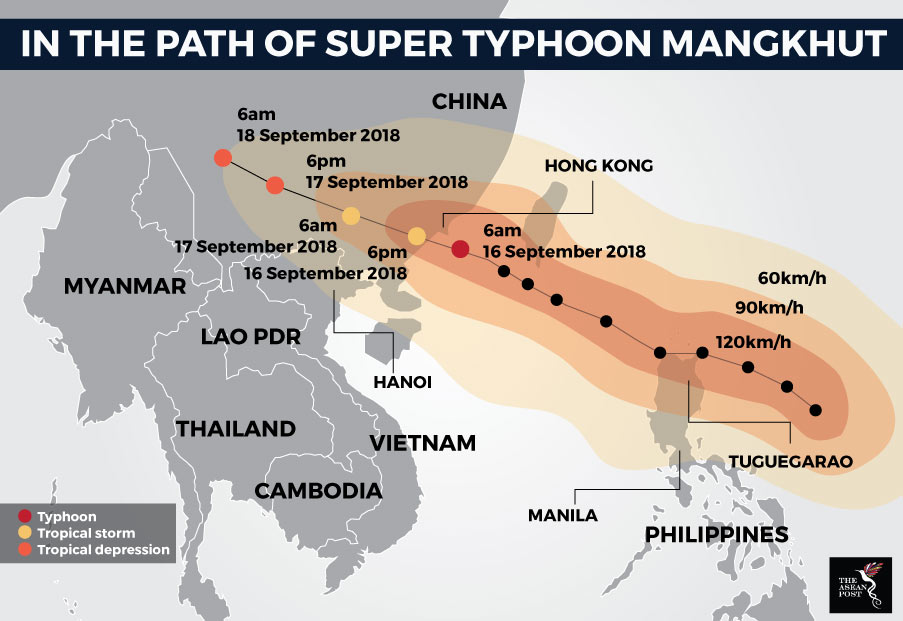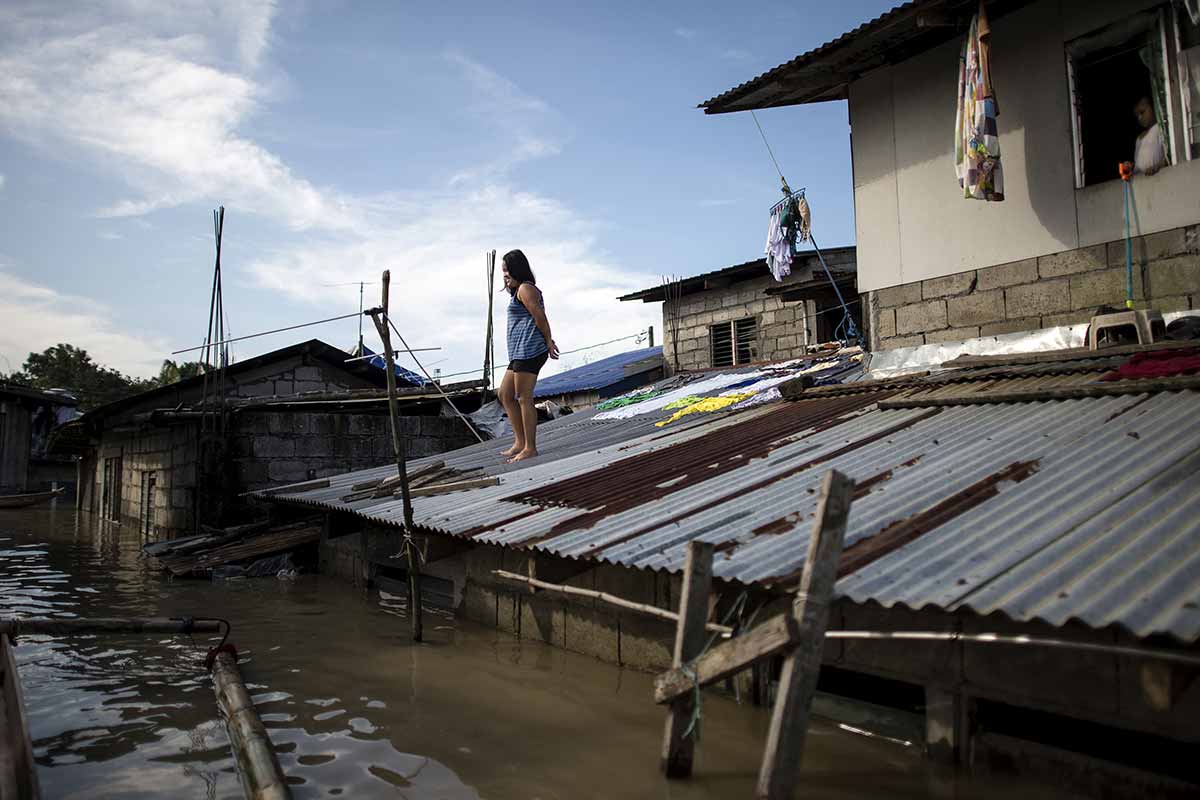As it barrelled down its path, the super typhoon Mangkhut left a trail of death and destruction in its wake. Mangkhut, the most powerful tropical storm of the year to date, continued to wreak havoc on Southern China’s Guangdong and Guangxi, killing four, after first making landfall in the Philippines and Hong Kong. More than three million people had been moved to safety in preparation for the typhoon in China, which made landfall in Guangdong, late Sunday afternoon. The super typhoon is expected to weaken by Wednesday.
In Hong Kong, high winds smashed windows, blew off roofs and construction sites, and drove waist-high storm surges into homes, hotels and restaurants. More than 100 people were reported injured, including some for bee-related injuries as the insects went amok when their hives were destroyed by the storm. In the neighbouring gambling enclave of Macau, all 42 casinos were closed for the first time ever in preparation for the typhoon.
Unfortunately, the Philippines was the hardest hit by super typhoon Mangkhut, locally known as Ompong. It made landfall in the province of Cagayan in northern Philippines, at 1.40 a.m. early Saturday morning, packing winds of up to 270 kilometres per hour (km/h). The death toll has already reached the high 70s, but rescuers fear that the body count will continue to rise as dozens more are missing, feared buried under at least 51 landslides or trapped by the rising water.

Source: Various sources.
Disaster, food price, inflation and food insecurity
In the wake of the super typhoon, the Philippines is now bracing for an accelerated inflation beyond the high year-on-year 6.4 percent recorded in August. Mangkhut’s landfall on the crucial crop-growing agricultural heartland of Ilocos, Cagayan and Cordilleras is unfortunate and comes at a time when the prices of food and other commodities were already surging beyond the government's control.
Cagayan’s Governor, Manuel Mamba, announced that crops in the area have been entirely destroyed. The Department of Agriculture’s initial estimate puts the losses at around 12 billion pesos (US$222 million). This include the loss of an estimated 250,730 tons of paddy, the nations’ key food staple, due to heavy rains, strong winds and massive flooding. The estimate exceeded the department’s worst-case forecast by some 60 percent.
The increasing demand for rice in the Philippines has already marked a knock-on increase in the price of rice in Vietnam, which is the main supplier for the grain. This week, the Philippine’s Department of Agriculture (DA) proposed the importation of an additional 132,000 tons of rice to stave off food shortages in the country’s southern region.
Bring in the supply
The typhoon is also expected to cause a reduction in fish catch. This will further drive up the already high price of fish, as the nation approaches the three-month closed season for key marine fishing areas across the Philippines. The closed season is a measure to allow key fish species the time to spawn, breed and restore their populations. The situation was further exacerbated after the super typhoon destroyed fish farms and cages in Batangas, Iloilo, Laguna and parts of Mindanao.
Mangkhut was not the only major cause of agricultural and fishery loss. The Philippines’ northern provinces had already suffered big losses this season from two monsoon rains that lasted between one to two weeks in July and August. The adverse effects of a worsening climate are reflected in increasing food prices, contributing indirectly to the recent jump in the country’s inflation rate.
The DA’s proposed rice importation plan this week comes with the additional importation of galunggong or round scad at the request of Iloilo and Davao. This is on top of the forthcoming importation of 17,000 metric tons of fresh, chilled, and frozen galunggong already planned to support supply and to stabilise the price of local fish in Metro Manila markets.
The post-typhoon conditions along Mangkhut’s trail have shown how vulnerable the region is to disastrous weather events. The creeping increase in food price may not be critical under normal conditions, but coupled with an instable weather pattern can lead to a chain of disasters. Climate variability and extremes are key drivers of global hunger and severe food crises. As the affected nations bounce back from the wrath of Mangkhut, it is clear that there is an urgent need to incorporate resilience building into development.
Related articles:
Food security is key to SDGs success
Climate-driven hunger on the rise
